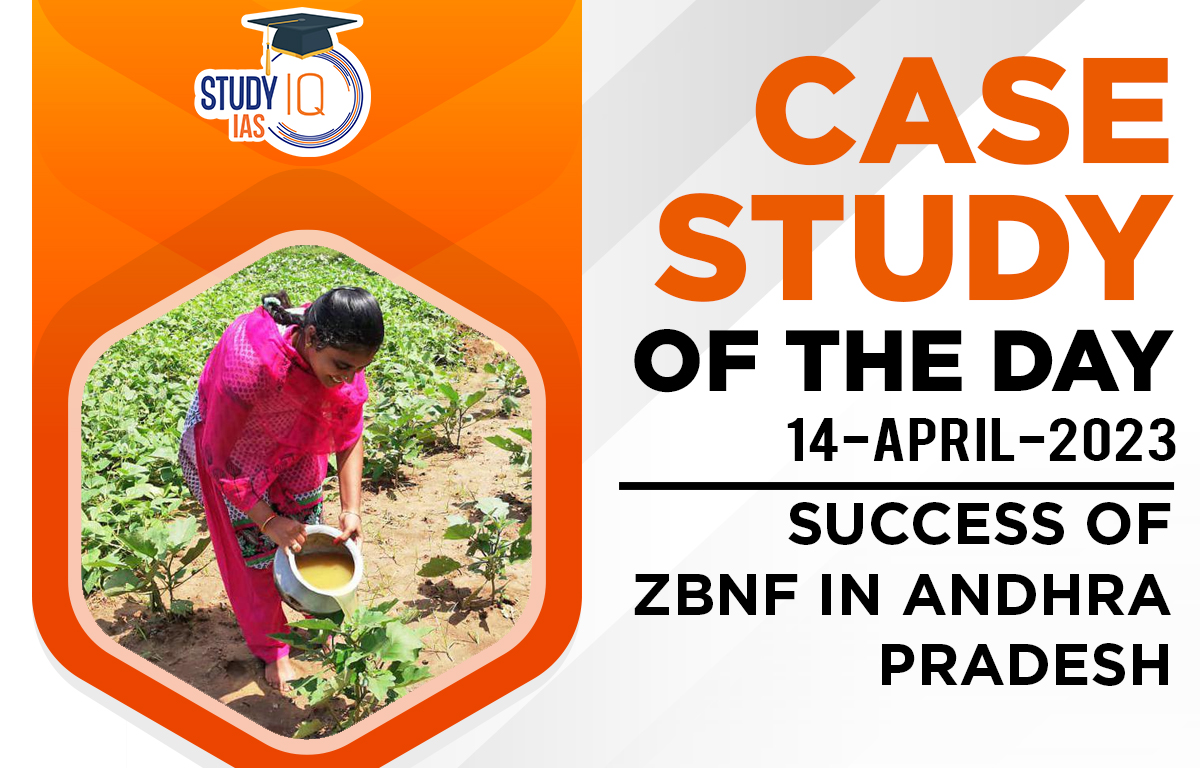Table of Contents
Background: Recent studies have observed that Zero Budget Natural Farming (ZBNF) in Andhra Pradesh has led to significantly higher crop yield compared to organic or conventional (synthetic fertilizers and pesticides) farming.
APCNF Programme
- Andhra Pradesh has been pushing 100 per cent chemical-free agriculture under the Andhra Pradesh Community Managed Natural Farming (APCNF) programme it launched in 2016.
- It aimed to promote sustainable agriculture practices, especially Zero Budget Natural Farming (ZBNF) that eliminate the use of synthetic fertilizers and pesticides, reduce costs and increase productivity while protecting the environment.
- Under the programme, farmers were trained in natural farming practices such as making organic fertilizers from locally available materials, using natural pest control methods, and creating their own seed banks.
- The programme also emphasized community participation and farmer-to-farmer learning, with the goal of spreading knowledge and techniques through peer networks.
- The programme has also received recognition and support from various organizations, including the Food and Agriculture Organization (FAO) and the World Bank.
- Therefore, the programme was successful in promoting sustainable and eco-friendly farming practices in Andhra Pradesh.
Outcome of the Program
- Higher Yield: When compared to the conventional treatment, yields were maintained in the case of organic farming and increased in ZBNF.
- Conventional treatment: involves the use of synthetic pesticides / fertilizers.
- Organic treatment: does not use any synthetic pesticides or fertilizers and mulch but uses purchased organic inputs, such as farmyard manure and vermicompost.
- ZBNF: involves not using any synthetic pesticides or fertilizers and uses home-made inputs comprising desi cow dung and urine with mulch. It does not involve any purchase of inputs.
- Unaltered Nutrient Availability: The nutrient availability was also unaffected in ZBNF.
- Economic Outcome: ZBNF covered 25 per cent of the total crop area in Andhra Pradesh, and is expected to save $70 million of fertilizer subsidies every year.
- Environmental impact: There has been reduced risks of associated risks such as greenhouse gas emissions, biodiversity loss, and environmental pollution
Significance of ZBNF over Traditional Methods
- ZBNF improves crop productivity and soil fertility through the natural process of atmospheric nitrogen fixation.
- By using cow dung, urine-based formulations, and botanical extracts, ZBNF reduces input costs for farmers.
- The agriculture sector’s contribution to the GDP will increase, and ZBNF will generate employment opportunities in agriculture and allied sectors, particularly for women.
- ZBNF can help address Hidden Hunger as it produces crops with micronutrients, ensuring better nutrition for the population.
- Since ZBNF does not use fertilizers and chemicals, it reduces the disease burden on humans caused by these substances.
- ZBNF can help reduce the trade deficit with countries like China by reducing imports of agricultural inputs.
- It reduces the problems of soil degradation, salinization, and water contamination caused by conventional farming methods.
Challenges
- Lack of wider-scale testing: ZBNF has not been tested on a large scale or on all soil types, so its effectiveness remains uncertain.
- Agrarian crisis: The crisis in agriculture, including rising input costs, better minimum support prices (MSP) for farmers, and falling or stagnant prices, remains a major concern.
- Implementation challenges: Issues like knowledge gaps, availability of native seed banks, cold chain facilities, MSP, and marketing remain unresolved.
- Marketing: Marketing of natural products is a major challenge as it requires a different approach from conventional products.
- Slow production: Crops grown using ZBNF may have slower production rates than those grown using conventional methods.
- Lack of research and development: Corporate sectors may be reluctant to invest in ZBNF due to time and output constraints, resulting in a lack of research and development in this area.
- Lack of irrigation and development: ZBNF may require more investment in irrigation and infrastructure development to be effective in certain regions.


 Daily Quiz 05 July 2025
Daily Quiz 05 July 2025
 SSC MTS Apply Online for 1075 Posts – ...
SSC MTS Apply Online for 1075 Posts – ...
 Dynamic Pricing: What It Is and Why It's...
Dynamic Pricing: What It Is and Why It's...





















